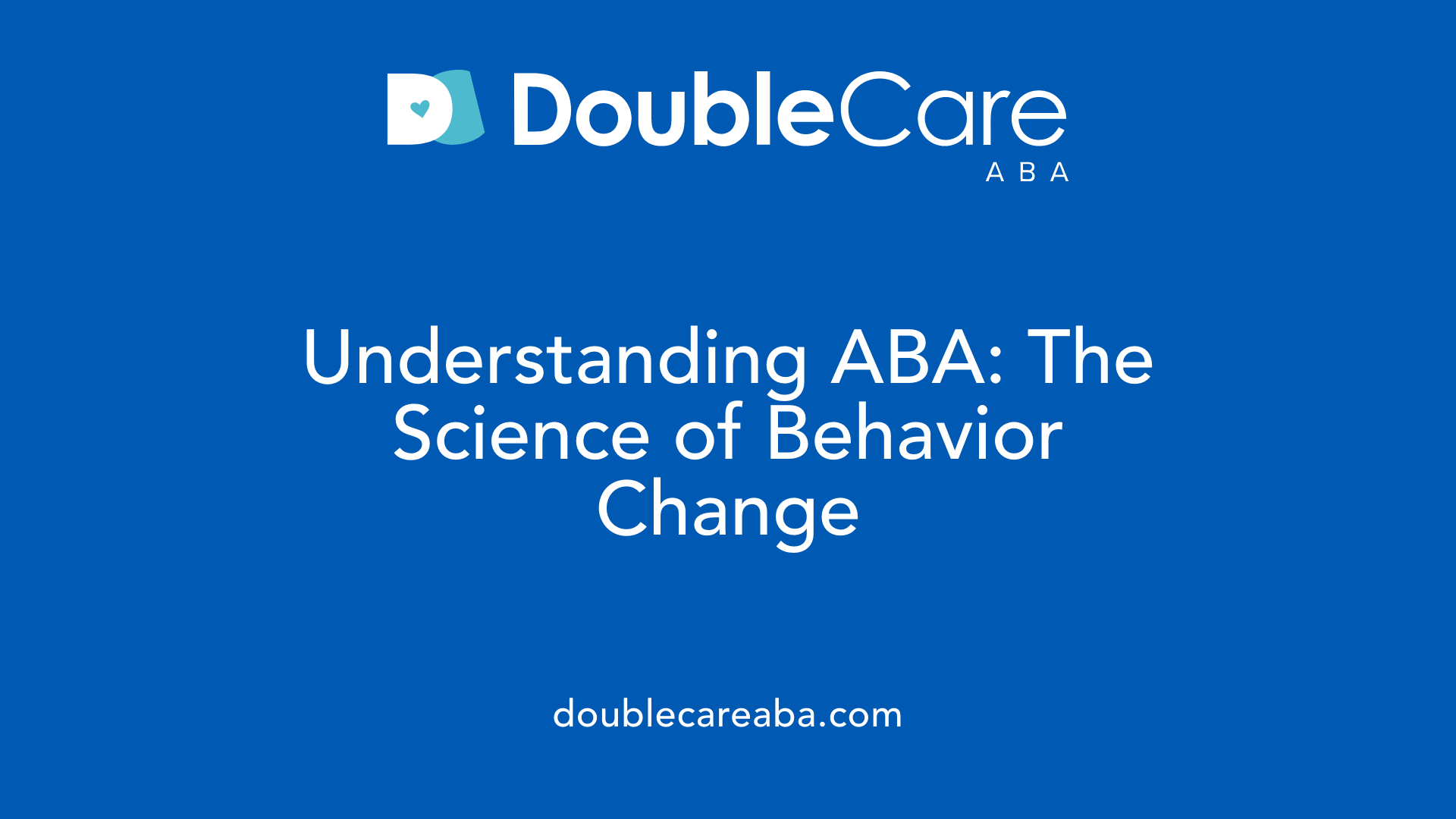How to Encourage Positive Social Behavior in Autism
Unlocking Social Potential: Strategies to Foster Positive Behavior in Autism

Understanding Positive Social Behavior in Autism
Positive social behavior is critical for individuals with autism to navigate their environment effectively and achieve personal independence. Through applied scientific methods, therapies such as Applied Behavior Analysis (ABA) have become pivotal in supporting these individuals to develop and maintain constructive social skills. This article explores how ABA therapy encourages positive social behavior by breaking down complex behaviors into manageable steps, reinforcing desirable actions, and tailoring interventions to individual needs.
Defining Applied Behavior Analysis (ABA) Therapy

What is Applied Behavior Analysis (ABA) therapy?
Applied Behavior Analysis (ABA) therapy is a scientific, evidence-based approach focused on understanding and improving human behavior. Grounded in the principles of learning and behavior, ABA aims to increase positive, helpful behaviors like communication, social skills, and independence, while reducing harmful or maladaptive behaviors. This is accomplished through techniques such as positive reinforcement, where desired behaviors are rewarded to encourage their repetition.
What are the core objectives of ABA?
ABA therapy targets socially significant behaviors to help individuals develop skills that enhance their quality of life. These include improving language and communication skills, attention, memory, academic abilities, and social interaction. By focusing on meaningful changes, ABA promotes independence and success, particularly for individuals with autism and other developmental disabilities.
How are ABA programs individualized and supervised?
Each ABA program is tailored to fit the unique needs of the individual. A Board-Certified Behavior Analyst (BCBA) conducts detailed assessments to identify skill gaps and preferences, then designs a personalized treatment plan. These programs combine both structured and naturalistic learning opportunities, ensuring that therapy is enjoyable and socially engaging. BCBAs oversee interventions, making ongoing adjustments based on progress data and collaboration with families.
What is the scientific basis and evidence supporting ABA?
ABA’s foundation rests on observing behavior and environmental influences, using the "A-B-C" model—Antecedent, Behavior, Consequence—to analyze and modify behaviors systematically. Numerous studies endorse ABA as an effective treatment, especially for autism, demonstrating improvements in intellectual functioning, language, daily living skills, and social abilities. It is recognized as a best-practice intervention by authoritative bodies such as the US Surgeon General and the American Psychological Association.
| Aspect | Description | Notes |
|---|---|---|
| Definition | Science-based therapy focusing on behavior change | Based on learning principles |
| Core Objectives | Increase helpful behaviors; decrease maladaptive behaviors | Includes communication, social skills, independence |
| Individualization & BCBA | Programs tailored by certified analysts after assessments | Supervised and adjusted based on data |
| Scientific Evidence | Supported by research; recognized by health authorities | Proven effective especially for autism |
How ABA Therapy Facilitates Skill Building in Autism
Teaching communication and social skills
ABA therapy plays a crucial role in enhancing communication and social abilities for individuals with autism. By breaking down complex social interactions into manageable steps, therapists use visual modeling, prompting, and script fading techniques to support understanding and practice of appropriate responses. This structured approach helps individuals build confidence and improve engagement in everyday social situations.
Improving daily living abilities
Aside from social skills, ABA therapy targets essential daily living tasks that promote independence, such as self-care, attention, memory, and academic skills. Using behavior chaining, therapists teach each component of a task sequentially, allowing individuals to master skills like dressing or eating independently. This systematic method ensures gradual learning tailored to each person's pace.
Role of positive reinforcement in behavior modification
Positive reinforcement is fundamental in ABA, encouraging repetition of desired behaviors by immediately rewarding them. Whether through verbal praise or tangible rewards, this technique motivates individuals to engage in helpful actions while reducing maladaptive behaviors. Additionally, analyzing antecedents and consequences (the ABC model) helps shape behavior effectively by understanding what triggers and maintains it.
Tailoring therapy to individual needs
ABA programs are not one-size-fits-all; they begin with detailed assessments performed by Board-Certified Behavior Analysts (BCBAs) who develop personalized plans addressing specific strengths and challenges. These programs evolve as individuals progress, combining natural learning opportunities with structured sessions and active family involvement to ensure relevance and maximize success in developing communication, social, and daily living skills.
Key ABA Techniques to Encourage Positive Social Behavior

What are the typical methods used in ABA therapy?
Applied Behavior Analysis (ABA) employs various evidence-based techniques designed to teach new skills and reduce challenging behaviors, especially for individuals with autism. The therapy uses positive reinforcement, where desired behaviors are rewarded to increase their occurrence, and negative reinforcement, which involves removing unpleasant stimuli to encourage behavior repetition.
Visual modeling is another valuable tool in ABA. It includes video modeling, charts, and pictures combined with verbal prompts to help individuals clearly understand expected behaviors. Prompting provides cues to guide correct responses, while fading gradually decreases these cues to promote independence.
Behavior chaining breaks down complex tasks into small, manageable steps, teaching each sequentially. This method is effective for skills like dressing or tying shoes. Behavior contracts are written agreements specifying expected behaviors along with associated rewards or consequences, enhancing motivation and accountability.
Extinction is used to reduce unwanted behaviors by withholding reinforcement; however, it may initially cause an increase in those behaviors. Redirection swiftly shifts attention from negative behavior to more positive alternatives, helping manage disruptive actions effectively.
Script fading involves the use of verbal or written guides for social interactions or task sequences. This strategy builds social confidence and facilitates smoother communication by decreasing prompt reliance over time.
These techniques are integrated thoughtfully into individualized ABA programs overseen by Board-Certified Behavior Analysts (BCBAs). The programs focus on improving communication, social skills, self-care, and independence, tailoring interventions to each person’s unique needs and preferences.
| Technique | Description | Purpose |
|---|---|---|
| Positive Reinforcement | Rewarding desired behaviors | Increase frequency of helpful behaviors |
| Negative Reinforcement | Removing unpleasant stimuli | Encourage repetition of positive behaviors |
| Visual Modeling | Using videos, charts, pictures | Clarify expected behaviors |
| Prompting & Fading | Guidance and gradual removal of cues | Foster independence |
| Behavior Chaining | Teaching complex tasks step-by-step | Master multi-step skills |
| Behavior Contracts | Written agreements with rewards and consequences | Promote accountability and motivation |
| Extinction | Withholding reinforcement to reduce unwanted behaviors | Decrease maladaptive behaviors |
| Redirection | Quickly shifting focus from negative to positive behavior | Manage disruptive behaviors |
| Script Fading | Using verbal/written guides with fading prompts | Build social skills and confidence |
The ABC Model: Analyzing Behavior to Encourage Positive Change
Understanding antecedents, behavior, and consequences
The ABC model in Applied Behavior Analysis (ABA) serves as a foundational tool for understanding behavior. "A" stands for Antecedents, events or conditions that occur before a behavior, triggering that behavior. "B" is the Behavior itself—the observable action. "C" represents Consequences, what happens immediately after the behavior, influencing the likelihood of the behavior reoccurring.
Role of ABC in tailoring behavior interventions
ABA therapists use the ABC framework to tailor interventions uniquely for each individual. By analyzing what triggers a behavior and the outcome it produces, therapists can design strategies that reinforce positive behaviors and reduce negative ones. This individualized approach ensures that therapy targets specific needs, promoting meaningful behavior change and skill development.
How consequences shape behavior in ABA
Consequences in the ABC model play a crucial role in shaping behavior. Positive reinforcement, where a rewarding consequence follows a desired behavior, encourages its repetition. Conversely, withholding reinforcement or applying extinction techniques can help decrease unwanted behaviors. By carefully managing consequences, ABA therapy creates an environment that supports learning and positive behavior growth.
Using functional assessments to develop strategies
Functional behavior assessments (FBA) apply the ABC analysis to identify the underlying reasons behind behaviors. These assessments help pinpoint antecedents and consequences maintaining problematic behaviors. The insights gained guide the development of effective intervention plans, focusing on teaching alternative skills and using reinforcement methods to support lasting behavioral improvements.
Role of ABA Professionals in Supporting Individuals with Autism
Who Provides ABA Therapy?
ABA therapy is delivered by a variety of trained professionals working collaboratively to support individuals with autism. The central figure is the Board Certified Behavior Analyst (BCBA), a specialist who designs, oversees, and customizes treatment plans based on thorough assessments of each person's unique needs and skills.
What Are the Responsibilities of BCBAs?
BCBAs are responsible for creating individualized ABA programs that promote skill development in communication, social interaction, daily living, and more. They analyze behaviors using the ABA "A-B-C" framework (Antecedent-Behavior-Consequence) and adjust interventions accordingly. Their expertise ensures therapies are scientifically grounded and focused on meaningful behavior change.
How Does the Therapy Team Work Together?
BCBAs collaborate with behavior technicians and therapists who carry out the day-to-day therapy sessions. These team members implement ABA strategies like positive reinforcement, prompting, and behavior chaining under BCBA supervision. This team-based approach allows consistent support and reinforcement of skills in varied settings.
What Is the Training and Certification Process?
Professionals must complete specialized education and supervised clinical experience to become certified. The BCBA credential requires training in behavior analysis, intensive practicum, and passing a national examination. Behavior technicians also undergo specific training to apply ABA techniques effectively during therapy sessions.
Why Is Family Involvement Important?
Families and caregivers play a critical role in extending the benefits of ABA therapy beyond clinical settings. BCBAs and therapists often train families to use ABA methods at home and in community environments. This collaboration fosters generalization of skills, supports consistent behavior improvement, and empowers individuals towards greater independence.
Together, this multidisciplinary team structure ensures comprehensive, evidence-based care tailored to foster the best possible outcome for children with autism.
Evidence Supporting ABA Therapy's Effectiveness
What Does Research Say About ABA Therapy's Impact on Language, Intellectual Functioning, and Daily Skills?
Extensive research underscores the effectiveness of Applied Behavior Analysis (ABA) in improving vital areas such as language, intellectual functioning, and daily living skills for individuals with autism. Studies reveal that many children undergoing ABA show significant gains in communication abilities, social interaction, and cognitive capabilities. These improvements are typically measured using standardized assessments that track progress over time, reinforcing ABA's role as an evidence-based therapy.
How Does Early Intervention Influence ABA Therapy Outcomes?
Early intervention with ABA therapy, often beginning in toddler years, is linked with the most substantial benefits. Programs providing intensive therapy—ranging from 10 to 20 hours per week—help children develop foundational language and social skills and promote greater independence. Early and tailored treatment sets a solid groundwork for acquiring more advanced behaviors and reduces long-term dependency on support services.
Which Health Authorities Recognize ABA as an Effective Treatment?
ABA therapy holds strong endorsements from major health organizations. It is recognized by the U.S. Surgeon General and the American Psychological Association as a best-practice treatment for autism spectrum disorder. These acknowledgments highlight ABA's proven efficacy and its status as a scientifically supported approach.
Is ABA Therapy Effective for All Individuals With Autism? What Factors Affect Success?
While ABA therapy benefits many, it is not universally effective for every individual. Success depends on several factors including the person's age, motivation, the expertise of the therapist, program customization, and family involvement. Tailored programs designed by Board-Certified Behavior Analysts (BCBAs) and collaboration with caregivers produce better outcomes. Critics advise cautious application to avoid overly rigid behavioral conformity, emphasizing compassionate, individualized care that respects each individual's uniqueness.
| Research Area | Key Findings | Notes |
|---|---|---|
| Language and Cognitive Gains | Significant improvements shown in several studies | Standardized tests confirm progress |
| Early Intervention | Intensive early therapy correlates with better outcomes | 10–20 hours/week recommended |
| Health Authority Recognition | Endorsed by US Surgeon General, APA | Confirms evidence-based status |
| Individual Variability | Effectiveness varies; tailored approaches needed | Sensitivity to individual preferences and needs |
This synthesis demonstrates ABA's robust empirical support while acknowledging the nuances that affect outcomes, ultimately guiding families toward informed, personalized therapy choices.
Individualizing ABA Programs for Maximum Impact

Detailed Initial Assessments
Individualizing ABA programs begins with thorough initial assessments conducted by a Board-Certified Behavior Analyst (BCBA). These detailed evaluations examine the individual's skills, behaviors, and preferences to create a precise profile. Understanding the unique strengths and challenges of each person ensures the therapy addresses specific needs effectively.
Incorporating Personal Preferences and Strengths
ABA programs are tailored to incorporate personal interests and abilities. By leveraging individual strengths and preferences, therapists can increase engagement and motivation during sessions. This personalized approach makes learning enjoyable and encourages positive social interactions, which are vital for sustaining progress.
Setting Meaningful Goals with Families
Collaborating closely with families and caregivers, ABA professionals set meaningful, achievable goals that align with the person's everyday life. These goals often focus on improving communication, social skills, self-care, and independence. Engaging families in the process ensures that therapy supports the individual's success not only during sessions but also at home and in the community.
Balancing Structured and Natural Learning Environments
Effective ABA programs blend structured teaching methods with natural learning opportunities. Structured environments allow focused skill development using techniques like discrete trial training, while naturalistic settings promote practicing skills in real-life contexts. This balance helps individuals generalize learned behaviors and fosters independence across diverse situations.
Involving Families and Caregivers in ABA Therapy

Collaboration between therapists and families
A crucial aspect of ABA therapy is the strong partnership between therapists, such as Board-Certified Behavior Analysts (BCBAs), and families or caregivers. This collaboration ensures that therapy goals align closely with the individual’s needs and family priorities, enhancing the relevance and effectiveness of interventions.
Training caregivers to use ABA strategies at home
Families and caregivers receive training on ABA strategies to implement them consistently at home. This training covers techniques such as positive reinforcement and prompting, enabling caregivers to encourage desirable behaviors throughout daily routines and learning experiences.
Importance of consistency across settings
Consistency in applying ABA techniques across therapy sessions, home, and other environments is vital. It helps generalize skills learned during therapy to real-world situations, reinforcing positive behavior changes and reducing maladaptive behaviors effectively.
Empowering families to support independence and social progress
By actively involving families, ABA therapy empowers them to support their loved ones’ independence and social development. Families learn to reinforce communication, social skills, and self-care, fostering long-term success and improved quality of life outside formal therapy sessions.
Navigating Insurance and Accessibility for ABA Therapy

How Does Insurance Coverage for ABA Therapy Vary?
Insurance coverage for Applied Behavior Analysis (ABA) therapy can differ significantly depending on your location and insurance provider. Many private insurance plans and Medicaid cover ABA therapy when it is prescribed by a doctor and deemed medically necessary. However, the extent of coverage, limits on hours, and requirements for authorization may vary.
What Determines Medical Necessity for ABA Therapy?
Medical necessity is usually determined by a licensed healthcare professional who evaluates the individual's needs comprehensively. Criteria often include a formal diagnosis such as autism spectrum disorder and an assessment indicating that ABA therapy will address social, communication, or behavioral challenges effectively.
How Can Families Find Quality ABA Providers?
Finding the right ABA provider involves more than just confirming insurance coverage. Parents and caregivers should look for Board-Certified Behavior Analysts (BCBAs) who design and oversee individualized programs tailored to their child’s unique needs. It’s helpful to seek providers who collaborate with families and share progress transparently.
What Questions Should You Ask When Selecting an ABA Provider?
To ensure quality and the right fit, consider asking:
- What training and certification do your therapists have?
- How do you customize ABA programs for each child?
- What data do you collect to monitor progress?
- How is communication handled between therapists and families?
- What strategies do you use to encourage independence?
By discussing these points upfront, families can make informed choices and access the best possible support for their loved ones through ABA therapy.
Building Foundations for Lifelong Social Success
ABA therapy serves as a cornerstone in promoting positive social behavior among individuals with autism by combining scientific principles with personalized intervention strategies. Its focus on increasing helpful behaviors like communication and social interactions while carefully reducing disruptive behaviors has led to meaningful improvements for many. Empowering families, training skilled professionals, and applying proven behavioral techniques together create a comprehensive support system. Although ABA is not universally the same for every individual, its evidence-based framework offers a valuable pathway toward greater independence and social integration, highlighting the importance of tailored, compassionate approaches to encourage a fulfilling life.
References
- Applied Behavior Analysis (ABA)
- ABA Techniques: Strategies for Behavior Analysts - GSEP Blog
- How to Treat Autism Using Applied Behavior Analysis
- Applied Behavior Analysis (ABA)
- 6 Benefits of ABA Therapy for Children with Autism
- Applied Behavior Analysis (ABA)
- Applied Behavior Analysis (ABA) for Children With Autism
- Applied Behavior Analysis (ABA)













